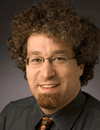Other Track AgendasBiobanking: Preparation, Storage & Analysis | Chemistry Automation & Liquid Handling | Drug Discovery Automation: High-content Screening & Cell Based Assays | Nano & Microfluidics | Next-Gen Sequencing |

Thursday, 6 June 201308:00 | Registration | |
Applications in Micro and Nanofluidics | Session Sponsors |
| | 09:00 |  | Keynote Presentation Acoustophoresis Offers New Lab-on-a-Chip Opportunities
Thomas Laurell, Professor, Lund University, Sweden
Acoustophoresis has become a powerful means to accomplish non-contact manipulation and spatial control of cells and microparticles in microfluidic systems. Acoustophoresis offers chip integration of a wide range of basic unit operations in bioanalytical process flows e.g. cell separation, buffer switching, valving, affinity bead extraction, cell interaction studies and cell concentration. Several biomedical applications of acoustophoresis will be overviewed. |
| 10:00 | Coffee Break and Networking in the Exhibition Hall | 10:45 | Engineering Polymer Micro and Nanoparticles with Controlled Size, Composition and Morphology by Microfluidics
Christophe Serra, Professor, University of Strasbourg, France
Capillary-based microsystems were developed to produce polymer microparticles of adjustable sizes (50 to 600 µm) with a narrow size distribution, different shapes (spheres, rods) and morphologies (core-shell, janus, capsules). Micromixers were used to nanoprecipitate a polymer solution and get size adjustable nanoparticles (80 nm to 200 nm) at low polymer to non-solvent flow rates ratios. | 11:30 | Synthesis of Metal Oxide Nanomaterials on Microfluidic Chips
Martin Gijs, Professor, Ecole Polytechnique Federale de Lausanne, Switzerland
We describe how microfluidic chips and, in particular, droplet-based devices can be used for the synthesis of inorganic coatings, nano- and microparticles and for formation of nanoparticle assemblies. | 12:15 | Lunch and Networking in Exhibition Hall | 13:30 | Poster Viewing Session | |
Microfluidic Devices |
| | 14:15 | Photo- and Radiochemistry in Microfluidic Chips
Nicole Pamme, Professor in Analytical Chemistry, Stockholm University, Sweden
Miniaturising chemical processing and analysis to the microfluidic scale allows for precise reaction control. Two examples of efficient microfluidic chemistry are presented: (i) photo-chemistry for light initiated reactions and (ii) radiochemistry for dose-on-demand PET imaging tracers. | 15:00 | Microfluidics for Cell and Particle-based Applications
Holger Becker, Chief Scientific Officer, Microfluidic ChipShop GmbH, Germany
Many applications in the life sciences use cells or particles. The use of microfluidics can greatly widen the spectrum of these applications by using unique techniques such as dielectrophoresis for cell assembly, particle sorting by Dean forces or transport phenomena of magnetic beads in microstructures. In this paper, we will present various examples of applications realized in microfluidic devices ranging from drug discovery to molecular diagnostics. Typical challenges in miniaturization and strategies to overcome these problems in product development will be discussed. | 15:45 | Coffee Break and Networking in the Exhibition Hall | 16:30 | Scaling Down Biology and Chemistry: Smaller or Larger?
Xavier Casadevall, Senior Scientist, ETH Zürich , Switzerland
Microfluidic devices can deliver higher degrees of control and throughput for chemical and biological experimentation. Furthermore, they enable new applications such as single cell assays and fully automated platforms for chemical synthesis optimization. Some of these examples will be presented. | 17:15 | Microfluidics Enabled IVD Devices - An R&D Perspective
Gregor Ocvirk, Group Head, Roche Diagnostics GmbH, Germany
Examples from the development of microstructured IVD devices are given in order to stress the importance of using scalable methods for device manufacturing and characterization already in early development. | 18:00 | End of Day One |
Friday, 7 June 2013 |
Advances in Microfluidics | Session Sponsors |
| | 09:00 |  | Keynote Presentation Ex-vivo Functional Evaluation of Circulating Tumor Cells to Predict Chemotherapeutic Response
Brian Kirby, Associate Professor, Cornell University, United States of America
We describe GEDI microfluidic devices and their implementation to capture and analyze CTCs in multiple diseases. GEDI device performance, functional assays, and genetic assays will be detailed with a focus on pancreatic and prostate cancer as well as patients with hereditary susceptibility syndromes. |
| 10:00 | Coffee Break and Networking in the Exhibition Hall | 10:45 | Droplet-based Microfluidics
Vincent Senez, Head of the Microtechnologies and Microsystems Department, IEMN - University of Lille, France
Manipulation of liquid micro-droplets in air required a smart engineering of liquid-solid interface and a deep understanding of the interaction of energy fields with the liquid. The talk presents our recent research activities in this field to implement new lab-on-a-chip technologies. | 11:30 |  | Keynote Presentation High-throughput Antibody Screening in Microfluidic Systems
Christoph Merten, Principal Investigator, European Molecular Biology Laboratory, Germany
We have optimized droplet-based microfluidic systems for cell-based assays, including a fully integrated system in which individual cells are encapsulated and assayed directly for the release of antibodies inhibiting drug targets. This technology facilitates screening 300,000 primary plasma cells in a single experiment. |
| 12:30 | Lunch and Networking in Exhibition Hall | 13:30 | Poster Viewing Session | 14:15 | Biomicrofluidics and its Therapeutic Applications
Xunli Zhang, Deputy Director of Graduate School, University of Southampton, United Kingdom
The presentation will cover the development of microfluidic systems and their applications related to blood flow dynamics, drug delivery systems and microbeads-based therapeutic embolisation. | 15:00 | Dynamics of Magnetic Nano- and Microparticles in Microfluidic Systems and Novel Applications
Claus Fütterer, Professor, University of Leipzig , United Kingdom
The competition between hydrodynamic friction, magnetic forces and thermal fluctuations are at the origin for a surprisingly complex dynamics. In homogeneous magnetic fields particles attract each other and usually form large chains following the field lines. Using dynamic fields we can control particle pairing or chain formation or the formation of even larger structures. It is also possible to induce particle repulsion which can be used as a micro-force assay. We present a novel method based on these properties for ultra precise particle sorting corresponding to their magnetic properties. | 15:45 | Coffee Break and Networking in the Exhibition Hall | |
Computational Microfluidics |
| | 16:15 | Progress in Computational Microfluidics Using TransAT
Djamel Lakehal, CEO, ASCOMP, United Kingdom
The paper reports on the progress made in predicting small-scale single- and multi-phase, microfluidics flows using the Computational Multi-Fluid Flow (CMFD) code TransAT. In the multiphase context, the code uses either the level-set approach or the phase-field variant as “Interface Tracking Methods”. The solver incorporates phase-change capabilities, triple-line dynamics models, Marangoni effects, electro-wetting and a micro-film sub-grid scale model for lubrication. | 17:00 | Toward Programmable Manipulation of Liquids in Microfluidic Platforms
Alaaldeen Halhouli, Associate Professor, German Jordanian University, Germany
Currently, research efforts are directed towards developing lab-on-a-chip systems for biotechnological screening. Precise and programmable handling of fluids in such systems is essential for reliable diagnosis. This presentation introduces newly developed integrated programmable microfluidic platform concepts and their potential applications | 17:45 | Close of Conference |
|

 Add to Calendar ▼2013-06-06 00:00:002013-06-07 00:00:00Europe/LondonNano and MicrofluidicsSELECTBIOenquiries@selectbiosciences.com
Add to Calendar ▼2013-06-06 00:00:002013-06-07 00:00:00Europe/LondonNano and MicrofluidicsSELECTBIOenquiries@selectbiosciences.com